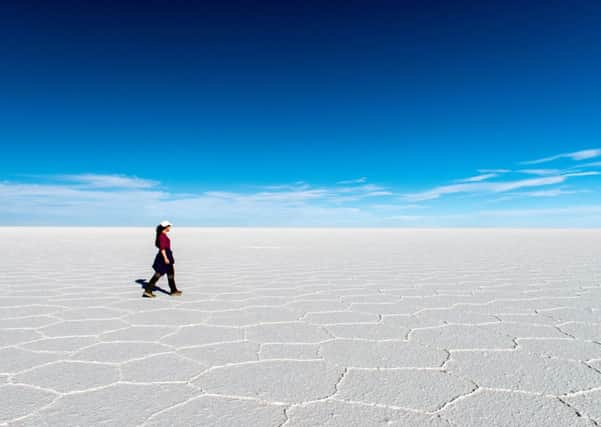Travel review: South America’s best kept secret


Mumbling enthusiastically in Spanish, Santos Quispe Cayo, a 68-year-old quinoa farmer, directs me to a collection of large pre-Colombian clay pots lined up in the corner of his sun-beaten garden.
The simple pieces of earthenware, which could be anywhere between 800 and 1,200 years old, form part of a bizarre collection of historical oddities dug up by self-made archaeologist Santos, from fields at the foothills of Bolivia’s Mount Tanupa.
Advertisement
Hide AdAdvertisement
Hide AdHis star exhibit though, lies at the bottom of a macabre sculpture garden, where llama bones and volcanic rocks have been used to assemble crude pieces of art. In a small cave sits a crouched skeleton, with a few rags still clinging to its bones. It’s most probably an indigenous Aymara who walked on this soil eight centuries previously, he casually tells me, just one of “many mummies you can find here”.
Were it not for a faded and curled certificate vouching for the museum’s authenticity, I’d be in complete disbelief. But in a country where the government appears to show little interest in restoring the past, it’s all very plausible.
Hindered by ongoing industrial disputes and a controversial socialist administration, Bolivia has always been the poor child of South America, rich in natural resources but failing to attract the tourist numbers of neighbouring Peru. Yet its overwhelmingly diverse scenery and largely unexplored archaeological sites evoke a sense of real discovery for visitors.
I’d arrived in Bolivia several days earlier, crossing the border from Chile at Hijo Canjon, with a knowledgeable local driver. Turning onto a bumpy dirt track, I waved goodbye to paved tarmac and road signs for the next seven days, embarking on a journey that would take me through the Andes and Bolivia’s Altiplano, climbing to head-thumping heights of 5,000m.
Advertisement
Hide AdAdvertisement
Hide AdLeaving clouds of dust, we pass volcanic cones streaked with a rainbow of mineral deposits on our way to the Eduardo Avaroa Andean Fauna National Reserve.
At midday, we stop at Laguna Verde and wait for the sun’s warmth to turn the arsenic-rich water turquoise, like ink seeping through litmus paper; then continue to the algae-rich, blood red Laguna Colorada, where swirling pink flocks of James’s flamingoes appear incongruous in a far from tropical environment.
As the air thins and my breath shortens, we reach the 4,800m Sol de Manana geyser field, where vast pools of viscous mud aggressively bubble and jets of steam soar into the sky.
It’s hard to imagine anything could live here, but as we drive through a narrow canyon, small viscacha twitch their whiskers between crevices, and vicuna (wild camelids) dart across the horizon.
Advertisement
Hide Ad